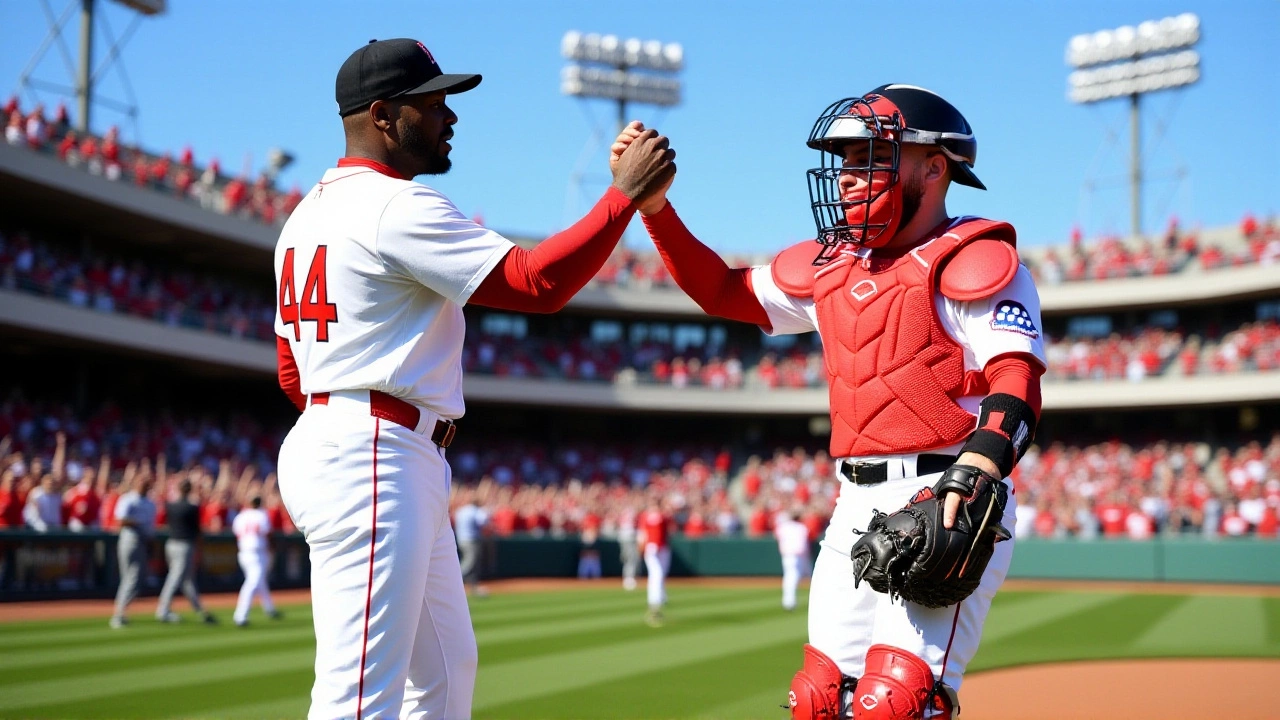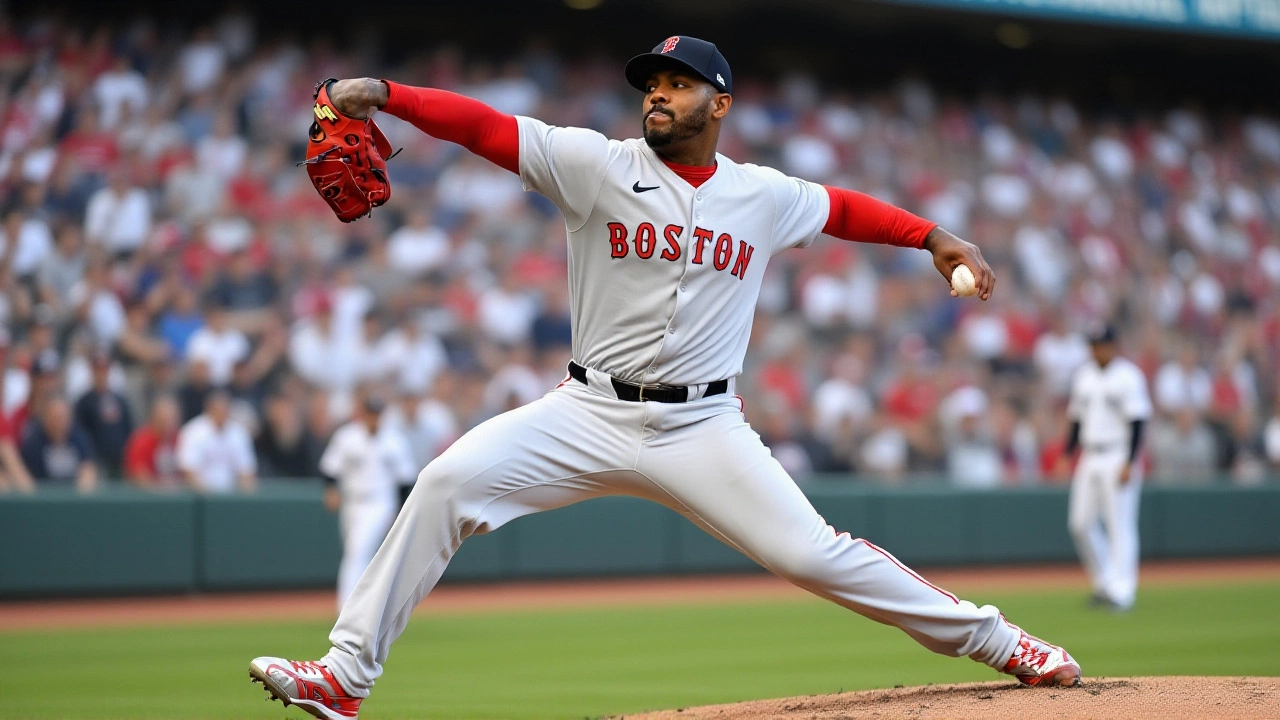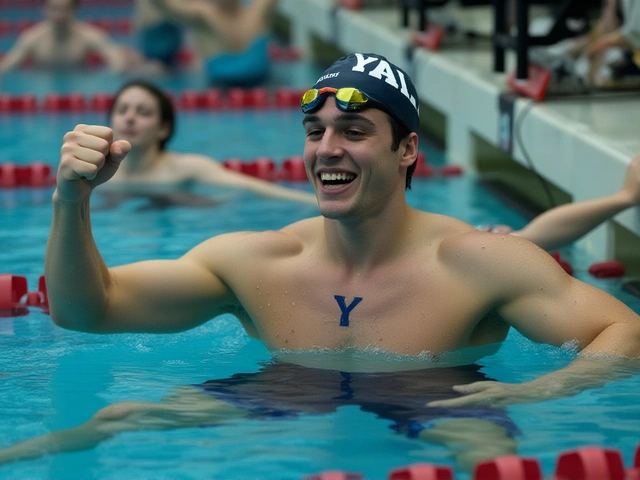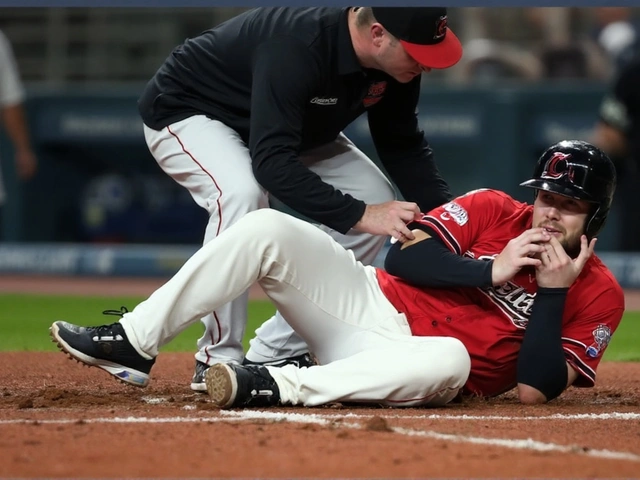When Aroldis Chapman, the veteran left‑handed closer, agreed to a new deal with the Boston Red Sox, the baseball world got a clear signal: the club is willing to pay top dollar for late‑inning firepower even as the pitcher heads toward his late‑30s.
The extension was first leaked by Francys Romero of BeisbolFR on August 30, 2025, and the Red Sox confirmed it the next day. It locks Chapman in through the 2026 season, with a mutual option for 2027 that could push his earnings to $26 million if certain innings and health thresholds are met.
Here’s the thing: Chapman is 37, in his 16th MLB season, and has just delivered arguably the best year of his career – a 1.17 ERA, 26 saves, and 74 strikeouts over 52 innings. That performance alone makes the contract worth a second look for fans and analysts alike.
Background: From Yankees Turmoil to Red Sox Resurgence
Chapman’s path to Boston was anything but smooth. After a strained exit with the New York Yankees in 2022 – where he was left off the playoff roster after skipping a mandatory workout – the 33‑year‑old reliever spent 2023 and 2024 bouncing between teams and roles.
In November 2024, Boston signed him to a one‑year, $10.75 million contract. The gamble paid off fast. By mid‑2025, Chapman had transformed the bottom of the Red Sox bullpen, turning close games into wins with his signature 101‑mph fastball and wicked slider.
It’s odd to see a player get a raise at age 38, but when the numbers are that compelling, the market logic flips.
Contract Details: Money, Bonuses, and Vesting Conditions
The new deal is a two‑part package. First, Chapman receives a $1 million signing bonus – a modest lump sum compared with his base salary but a nice morale boost, according to Alex Speier of The Boston Globe.
For 2026, the contract guarantees $12 million, a $3.5 million jump from his 2024–25 deal. The mutual option for 2027 is set at $13 million, with a $300,000 buyout if either side walks away.
Crucially, the option vests only if Chapman logs at least 40 innings in 2026 and passes a post‑season physical. If he does, the total guaranteed money over the two seasons climbs to $26 million, according to Chris Cotillo of MassLive.
In plain language, the Red Sox are betting that Chapman's arm will stay healthy enough to pitch enough late‑inning work, and they’re willing to pay a premium for that certainty.
2025 Performance: Numbers That Talk
Through 57 games and 52 innings, Chapman’s stats read like a textbook case of elite relief pitching. He posted a 1.17 earned run average, struck out 74 batters (a 12.8 K/9 rate), and saved 26 games – all while limiting walks to just nine.
His WHIP (walks plus hits per inning pitched) sat at 0.88, ranking him among the top five relievers league‑wide. Those numbers earned him his eighth All‑Star selection and solidified his spot as the penultimate closer in the American League.
Even more impressive is his strikeout‑to‑walk ratio of 8.2, a figure rarely seen outside of a handful of Hall‑of‑Fame arms.
Reactions: From the Dugout to the Broadcast Booth
Red Sox manager Alex Cora praised the veteran’s work ethic, noting, “Aroldis brings a level of intensity that rubs off on the whole staff. We’re thrilled to keep him around.”
Yankees manager Aaron Boone was candid when asked about facing Chapman in the postseason, saying, “This might be his best season – or certainly one of them – and that’s saying something. We’ve got to see him a couple times down the stretch. Hopefully that serves us well.”
Analysts at The Athletic highlighted the financial angle, pointing out that the deal reflects a broader MLB trend of rewarding high‑leverage relievers with longer, more lucrative contracts, even as they age past the typical prime.

Impact on Boston’s Postseason Aspirations
With the contract settled, Boston can focus on the upcoming playoffs without the cloud of a looming free‑agent market. Chapman’s presence gives the Sox a clear ace for the ninth inning, a luxury that many playoff teams lack.
Should the 2025 Red Sox make a deep run, Chapman could rewrite his own postseason narrative – something that eluded him in New York, where he never saw a World Series appearance after 2019.
The mutual option also adds flexibility. If Chapman’s 2026 workload exceeds 40 innings and stays healthy, Boston secures a proven closer at a fixed cost, potentially freeing up mid‑season roster space for younger arms.
Historical Perspective: Where Chapman Fits in the All‑Time Saves List
At the time of the extension, Chapman sits with 361 career saves, placing him 13th on the all‑time MLB list. That puts him in the company of legends like Trevor Hoffman and Lee Smith.
For Boston, he becomes only the third pitcher in franchise history to reach the 300‑save plateau while still active, joining the likes of Jonathan Papelbon and Koji Uehara.
The contract, therefore, is not just a financial commitment; it’s a nod to a player who may soon break into the top‑ten all‑time saves club if he stays healthy.
What’s Next: Monitoring Health, innings, and the 2027 Option
The next few months will be a waiting game. Chapman’s innings count will be tracked closely, and Boston’s medical staff will be keyed into any minor niggles that could affect the 2027 vesting clause.
If all goes well, the Red Sox will head into the 2026 season with a seasoned closer locked in, setting the stage for a potentially historic stretch of back‑to‑back postseason runs.
For fans, the takeaway is simple: expect the lights to stay on in Fenway’s bullpen well into the next decade, thanks to a deal that blends performance, loyalty, and a dash of calculated risk.
Frequently Asked Questions
How does the contract affect the Red Sox’s salary cap?
The deal adds $12 million to Boston’s payroll for 2026, a modest increase relative to the team’s $260 million total payroll. Because MLB has no hard salary cap, the extension mainly impacts luxury‑tax calculations, pushing the Sox slightly closer to the $230 million threshold for the next two seasons.
What must Chapman do to trigger the 2027 option?
He needs to pitch at least 40 innings in the 2026 regular season and pass a post‑season physical exam. If both conditions are met, the option becomes guaranteed for $13 million; otherwise, the team can decline, paying a $300,000 buyout.
Why did the Red Sox sign a 37‑year‑old reliever?
Chapman’s 2025 performance – a 1.17 ERA, 26 saves, and a 12.8 K/9 rate – ranks him among the league’s elite closers. The Sox view him as a low‑risk, high‑reward asset who can reliably shut down games in September and October, a need that outweighed his age.
How will this deal influence other teams’ reliever contracts?
Boston’s willingness to lock in a veteran closer for $12 million plus a $13 million option may encourage other clubs to consider similar extensions for high‑leverage arms, especially those delivering sub‑2.00 ERA seasons. It could spark a modest uptick in long‑term deals for relievers over the next offseason.
What does this mean for Chapman’s legacy?
Securing a multi‑year contract with a historic franchise like the Red Sox cements Chapman’s status as one of the game’s premier closers. If he reaches 400 career saves, his Hall of Fame résumé will be bolstered further, especially with the potential for postseason heroics in Fenway.





